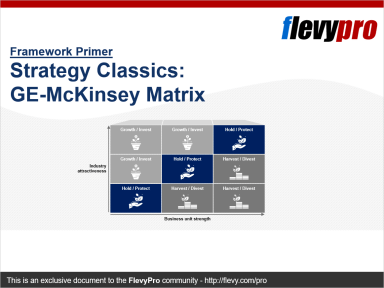
Originally published: 22/09/2020 07:22
Last version published: 22/09/2020 09:12
Publication number: ELQ-70595-2
View all versions & Certificate
Last version published: 22/09/2020 09:12
Publication number: ELQ-70595-2
View all versions & Certificate

Strategy Classics: GE-McKinsey Matrix
GE-McKinsey Matrix is a classic strategy framework developed by McKinsey used for Portfolio Management.






